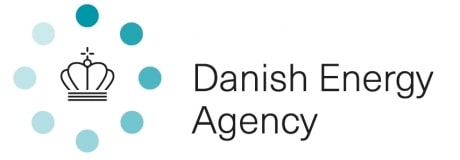Download our publication on district energy
This article is part of our publication ‘District Energy’
Download nowPerspective
District energy


Clear district heating regulation, continuously improved since the Heat Supply Act of 1979, has been the determining factor in the widespread use of district heating and combined heat and power.
The Danish district heating legislation is set out in the Heat Supply Act from 1979 that regulates the heating sector. It provides local authorities (i.e. municipalities) with the power to engage in local heat planning, decision-making on energy infrastructure and resource prioritisation. Local decision-makers have full authority over local heating system designs, but they do so by relying on a centralised policy and a technical framework provided at the national level.
This ensures that district heating projects are in line with the overall national ambitions concerning the development of the heating sector. The Danish Energy Agency (DEA) developed the legislation and accompanying guidelines, but simultaneously, the evaluation and decision on the individual heating project are conducted by a local authority with detailed knowledge of local urban development, heat demand and any other relevant local considerations.
The Danish Heat Supply Act has also established specific zones of heat networks throughout the country. Within each zone a specific type of heat supply is promoted through the Danish heat legislation. The zones are as follows:
The choice of heat supply must be based on socio-economic cost-benefit analyses. To help local authorities complete relevant economic analyses, the DEA provides guidelines and methodologies with a number of socio-economic assumptions. These assumptions include, among others, fuel prices, electricity prices, externality costs of emissions and interest rates. The DEA also provides technology data, which can be used as a reference. This forms a uniform asis for assessing the heat supply possibilities for local authorities nationwide.
The price of heat is not the same in all Danish district heating areas, but the principles of determining the heat price are the same. The method for setting the heat price is set by law. The legislation states that the heat price paid by the consumer should cover all necessary costs related to supply heat.
However, heat supply companies must remain not-for-profit, under Danish law. The heat plants cannot charge more for the heat than the actual costs of producing and transporting heat to consumers. It is, however, important to emphasise that these costs also include depreciation of assets and financing costs, so that the heating companies can be financially sustainable both in the short and long term. Cost of heat to the consumer is therefore affected by the following parameters:
This article is part of our publication ‘District Energy’
Download nowEstablishment of district heating systems requires large investments in infrastructure compared to individual heat supply options. However, the operational costs and the environmental impacts will in many cases be significantly lower. This is particularly true if the heat is produced by an energy-efficient CHP unit or if heat is produced by utilizing excess heat from an industrial plant, for example a steel or cement plant. Levelised costs of energy
Danish experiences show that when evaluating the feasibility of district heating, it is important to consider the costs over the full lifetime of a heat supply system (typically referred to as “levelised costs of energy” or LCoE). In many cases, district heating is the most feasible solution over a full lifecycle analysis. Large infrastructure investments will be recovered after some years by lower annual costs. Of course, viability depends on a number of factors including heat demand and the heat density in the specific area.
The use of high-quality components, although initially increasing the capital cost, usually results in lower annual costs and therefore, in many cases, a lower lifetime cost due to lower maintenance costs and longer life time. This also means lower annual heating costs for heat consumers. It is important to consider that the technical lifetime of a high quality district heating network is typically 40-50 years.
The costs of a district heating system highly depend on economies of scale both for heat production plants and network costs. It would not be cost effective to have a parallel grid to supply heat to individual consumers. Therefore, it requires thorough and detailed planning to ensure consumer protection as well as benefits for society while creating reliable investment conditions for a technology that plays a major role in the green transition.
publications
Combined heat and power production
+10
publications
Energy efficiency in buildings
+12